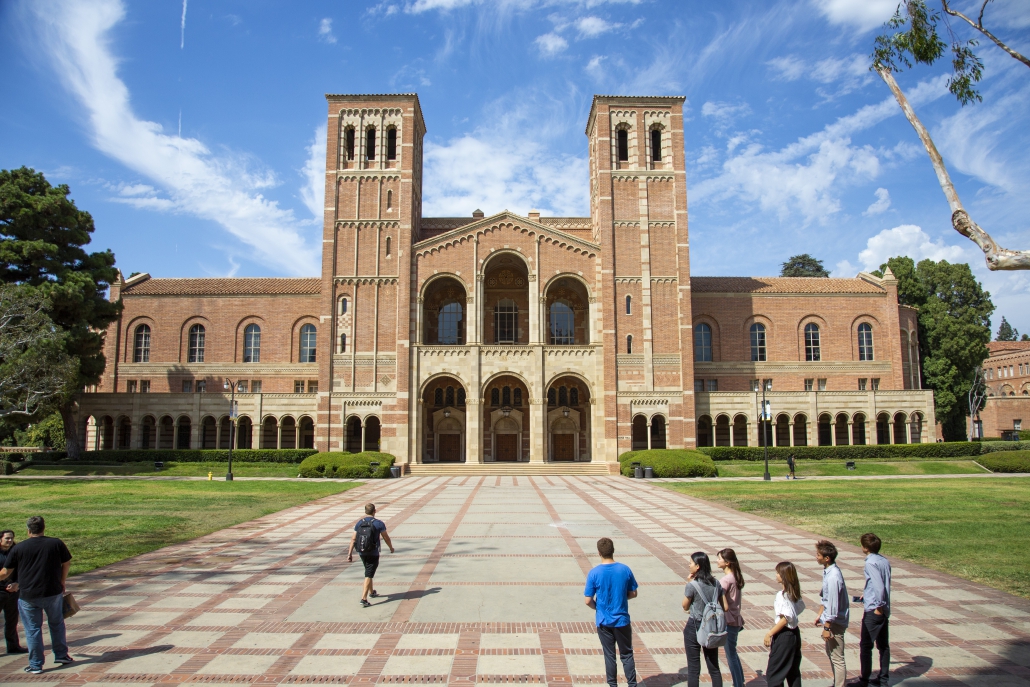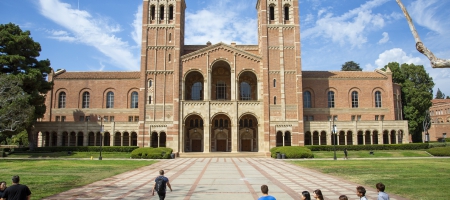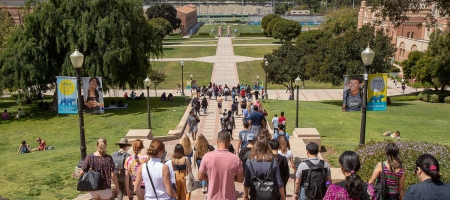Top Stories from 2019

UCLA College often featured in the news during 2019: from discoveries about health, the environment and the Universe, to research and engagement that are helping to move society forward. Here are some of the top stories of the year.
Science and technology
Einstein’s general relativity theory questioned, but still stands ‘for now’
A detailed analysis of a star’s orbit near a supermassive black hole gives a look into how gravity behaves.
Ancient stars shed light on Earth’s similarities to other planets
A new method used to study planets’ geochemistry implies that Earth is not unique.
New device creates electricity from snowfall
Researchers have designed a nanogenerator that can work in remote areas on its own power — and acts as a weather station.
Health and behavior
Biochemists discover new insights into what may go awry in brains of people with Alzheimer’s
The findings could lead to new methods to get the body’s repair enzyme to work better.
A small electrical zap to the brain could help you retrieve a forgotten memory
Professor found that the left rostrolateral prefrontal cortex is important in accessing knowledge that was formed in the past and making decisions about it.
Students and campus
‘Pink tax’ activists made the most of their UCLA experience
Twin sisters Helen and Rachel Lee have dedicated themselves to repeal of the sales tax on feminine hygiene products.
Graduate helps victims of Syrian war ‘rise again’
Haya Kaliounji founded the non-profit, Rise Again, which provides people wounded in the conflict in her home country with free prosthetic limbs.
Environment and climate
Arctic Ocean could be ice-free for part of the year as soon as 2044
UCLA study finds the ominous change could happen earlier than previously thought.
UCLA experts are studying how the Woolsey fire affects plant and animal recovery
Research teams closely monitor the Santa Monica Mountains to examine impacts throughout the food chain.
UCLA aflutter over the butterfly effect
Why there were so many painted lady butterflies in Southern California this year.
Nation, world and society
Unearthing the mystery of the meaning of Easter Island’s Moai
The Rapanui people most likely believed the ancient monoliths helped food to grow on the Polynesian island.
Political scientists launch one of largest-ever public opinion surveys
As the nation heads into another contentious presidential campaign, UCLA will study what drives voters’ choices in 2020.
Arts and culture
Hollywood Diversity Report finds bright spots for women and minorities
“We feel confident our partners in Hollywood today see the value of diversity in ways that they did not before,” said Darnell Hunt, dean of the UCLA College Division of Social Sciences.
Faculty and staff
Historian Kelly Lytle Hernández awarded MacArthur Fellowship
The renowned scholar of race, mass incarceration and immigration said she will continue to expand her social justice work.
Rankings headlines
UCLA named No. 1 U.S. public institution by U.S. News & World Report for third consecutive year






















